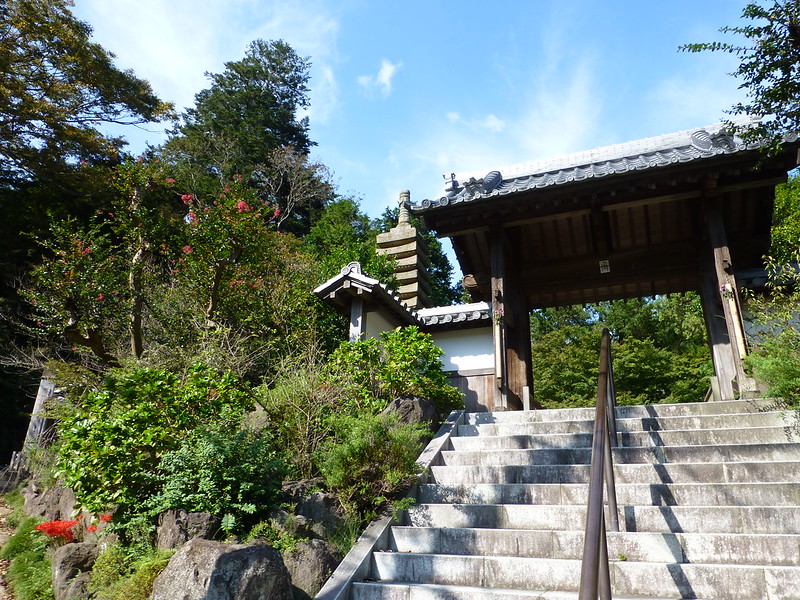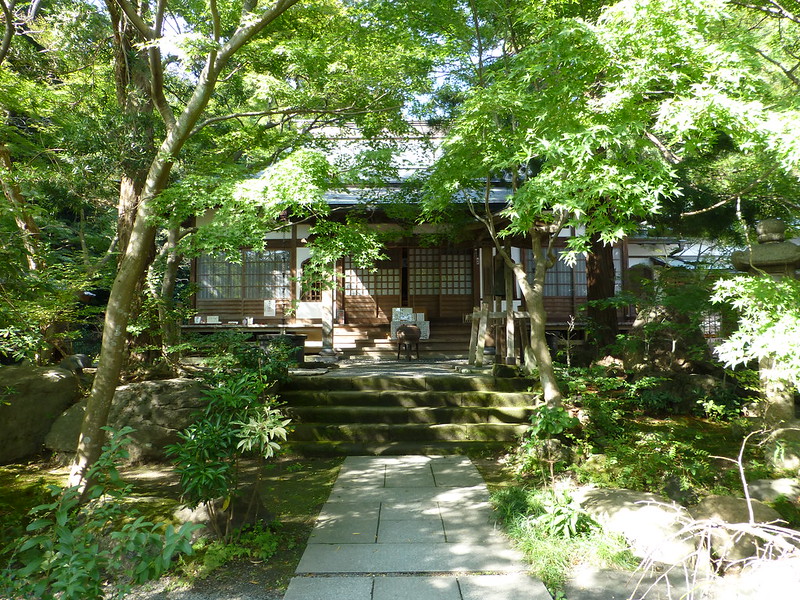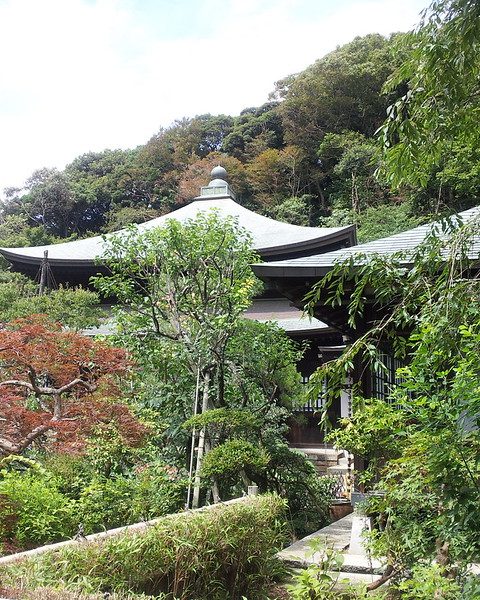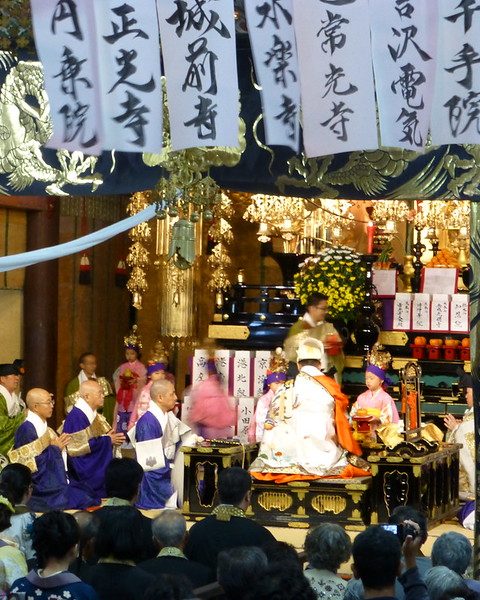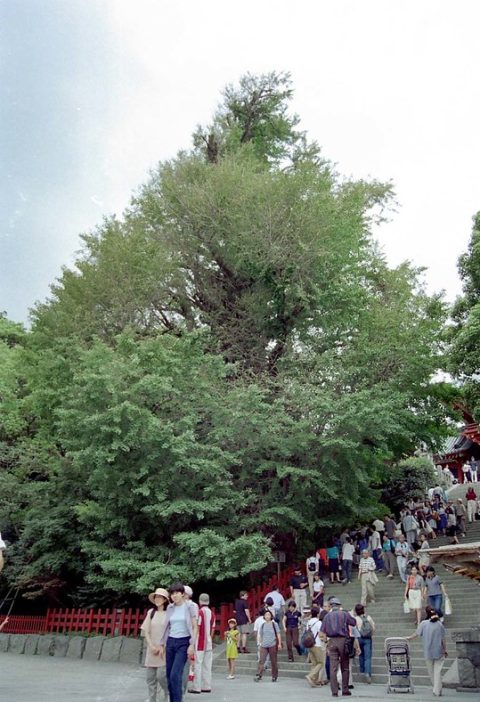Kakuon-ji is located a 10 minutes walk from Kamakura-gu, which is between ridges. On the other side of the ridge, there is Kencho-ji. Kakuon-ji is in nature.
There is a hall that looks like the main hall in front of the entrance, but it is Aizen-do which enshrines Aizen-myoo and was moved from Dairaku-ji. You’re not able to enter the precincts freely, you have to participate in a tour guided by staff, which is held every hour. It takes 500 yen for the admission fee, but the tour is very good because the staff talks very detailed explanations during the about 50 minutes tour (guidance is Japanese only). Photography is prohibited.
The tour is going to the hondo (main hall) through the path surrounded by trees. There is an 800-year-old Kaya tree on the side of the hondo. It doesn’t have anything decorated with Simenawa (enclosing rope) or something, but the great tree has seen 800 years of the history of the temple. There is a Yakushi Nyorai-zo and Juuni Shinsho-zo in the hondo. I also saw Juuni Shinsho-zo at the Kamakura Museum of National Treasure. At the time I visited, the god of the dog has been moved to the Kamakura Museum of National Treasure.
Going to the back of the hondo, there is a big Metasequoia (Akebono Sugi). It is only 50 years old but very high. The staff worries that the hondo is broken if the tree is fallen. The problem is that it was given by Emperor Hirohito, so it should not be cut. This Metasequoia tree shines golden with the morning sun, and it is really beautiful only a few days a year.
In this area, Plum blossoms in February, and hydrangea boom in June. In addition, in April, Kotsubogoke is growing all around and is so beautiful.
